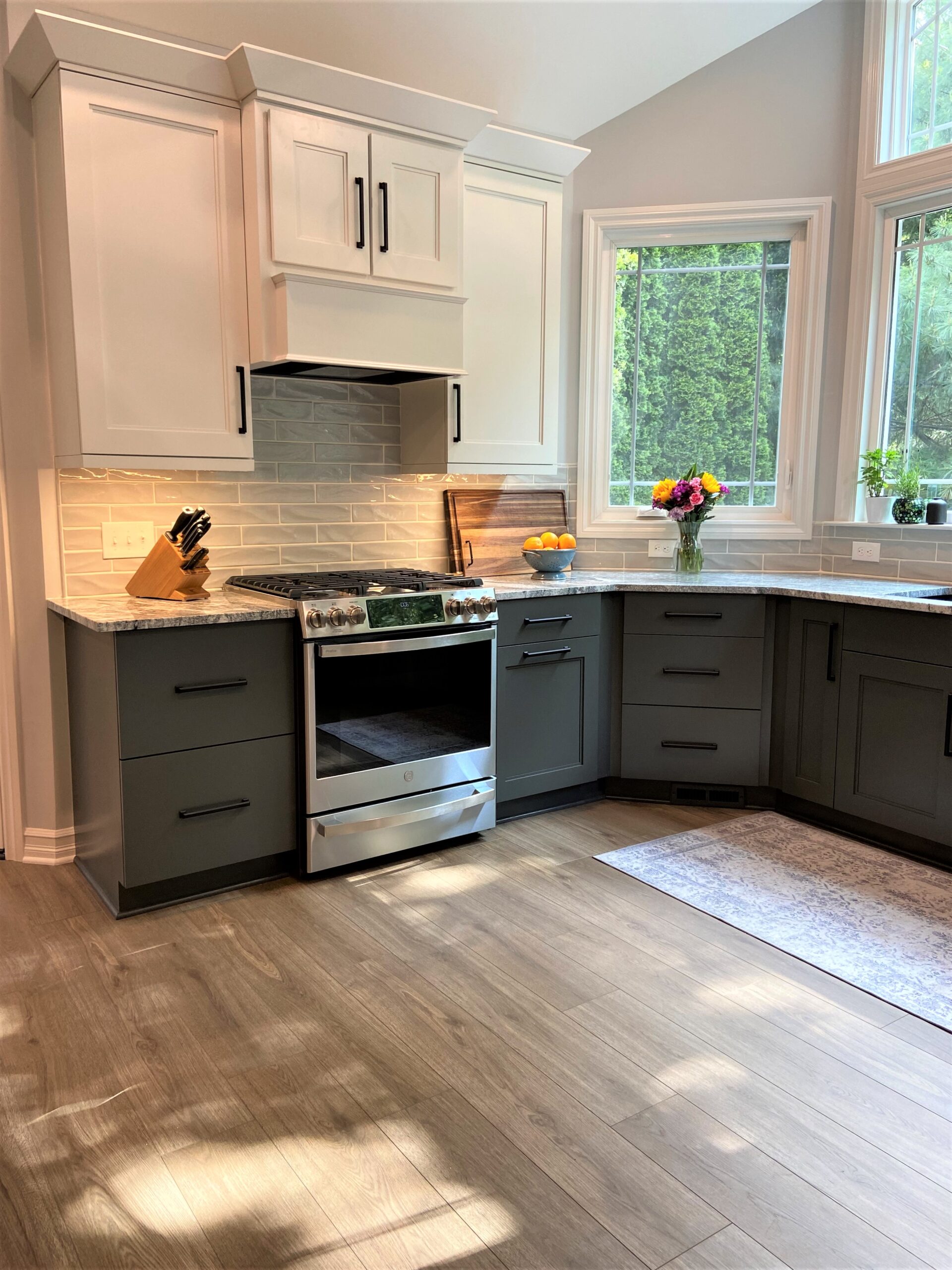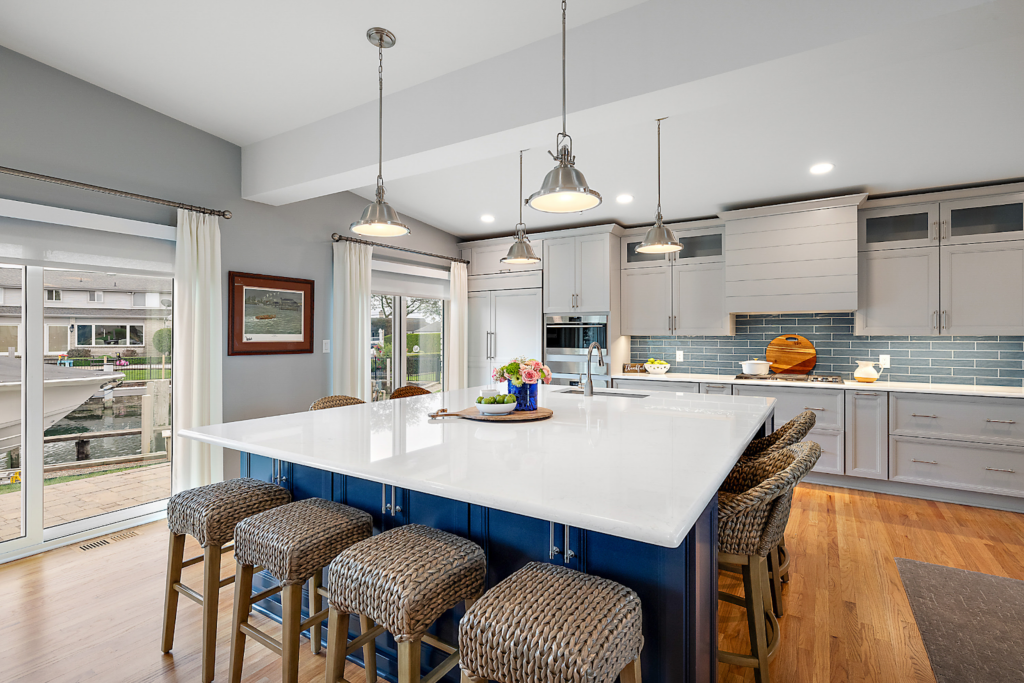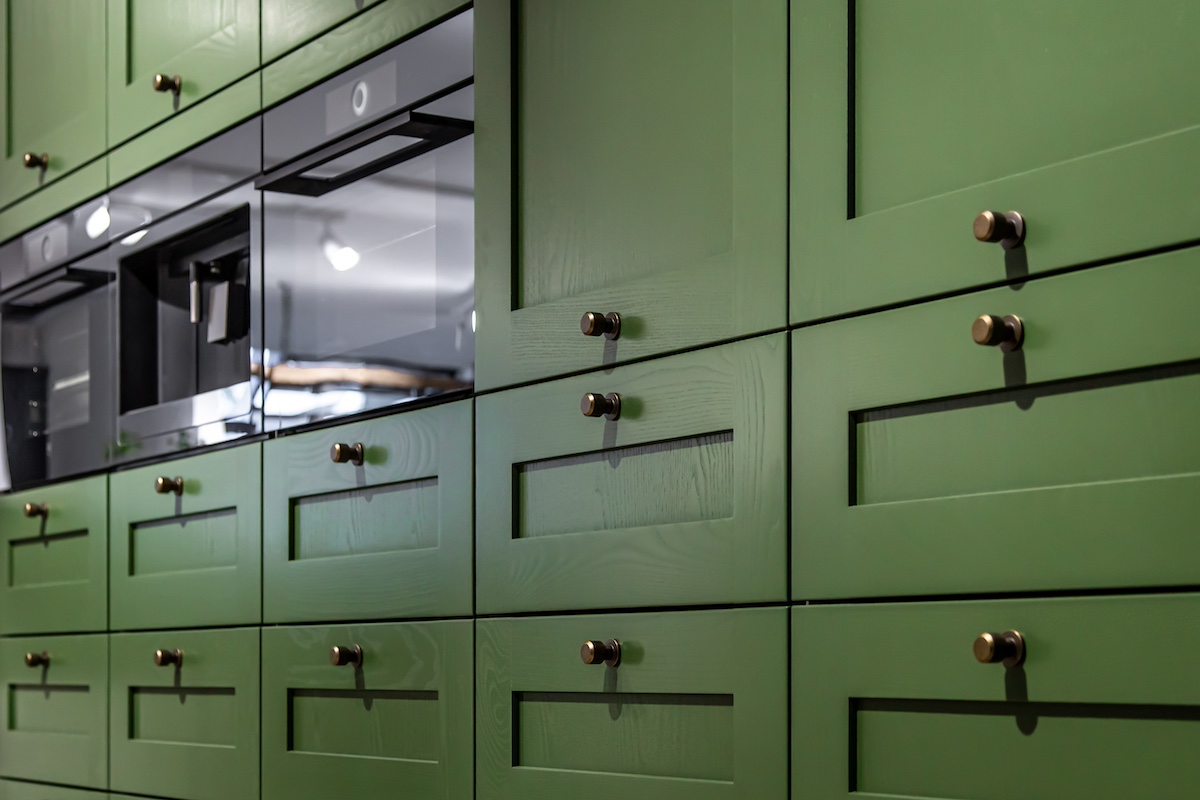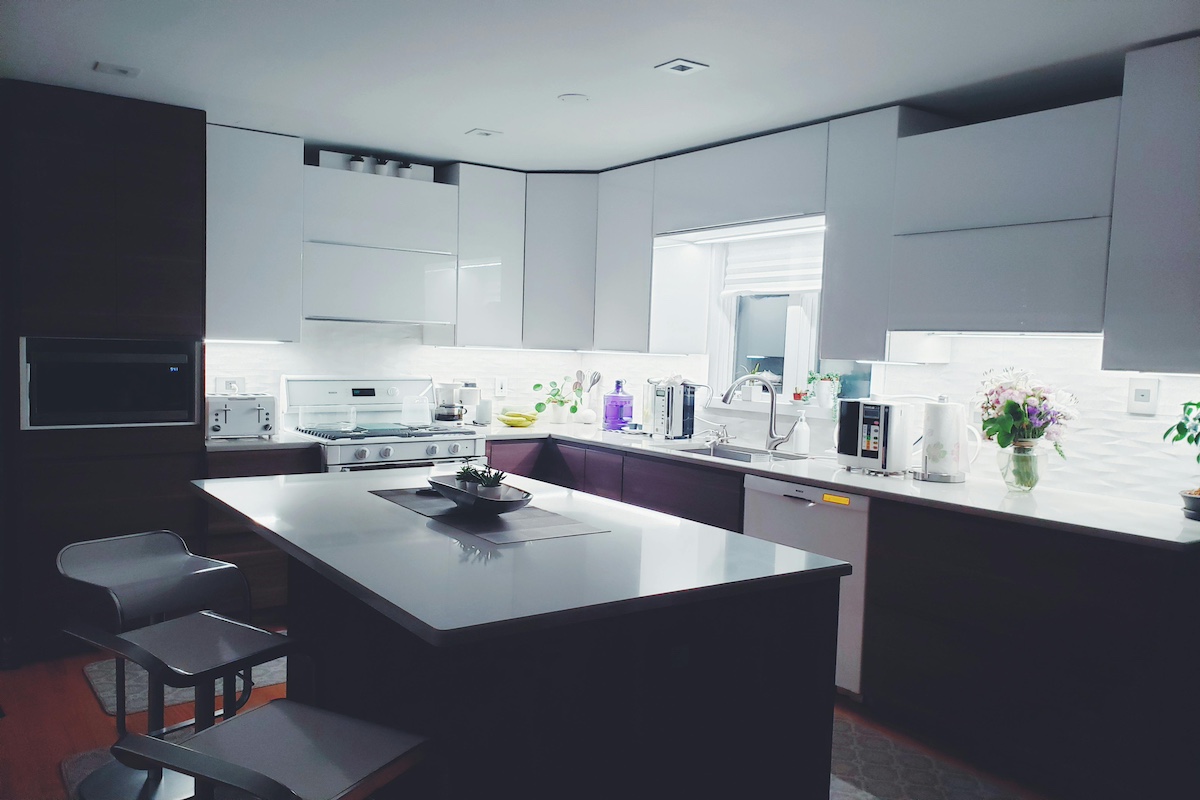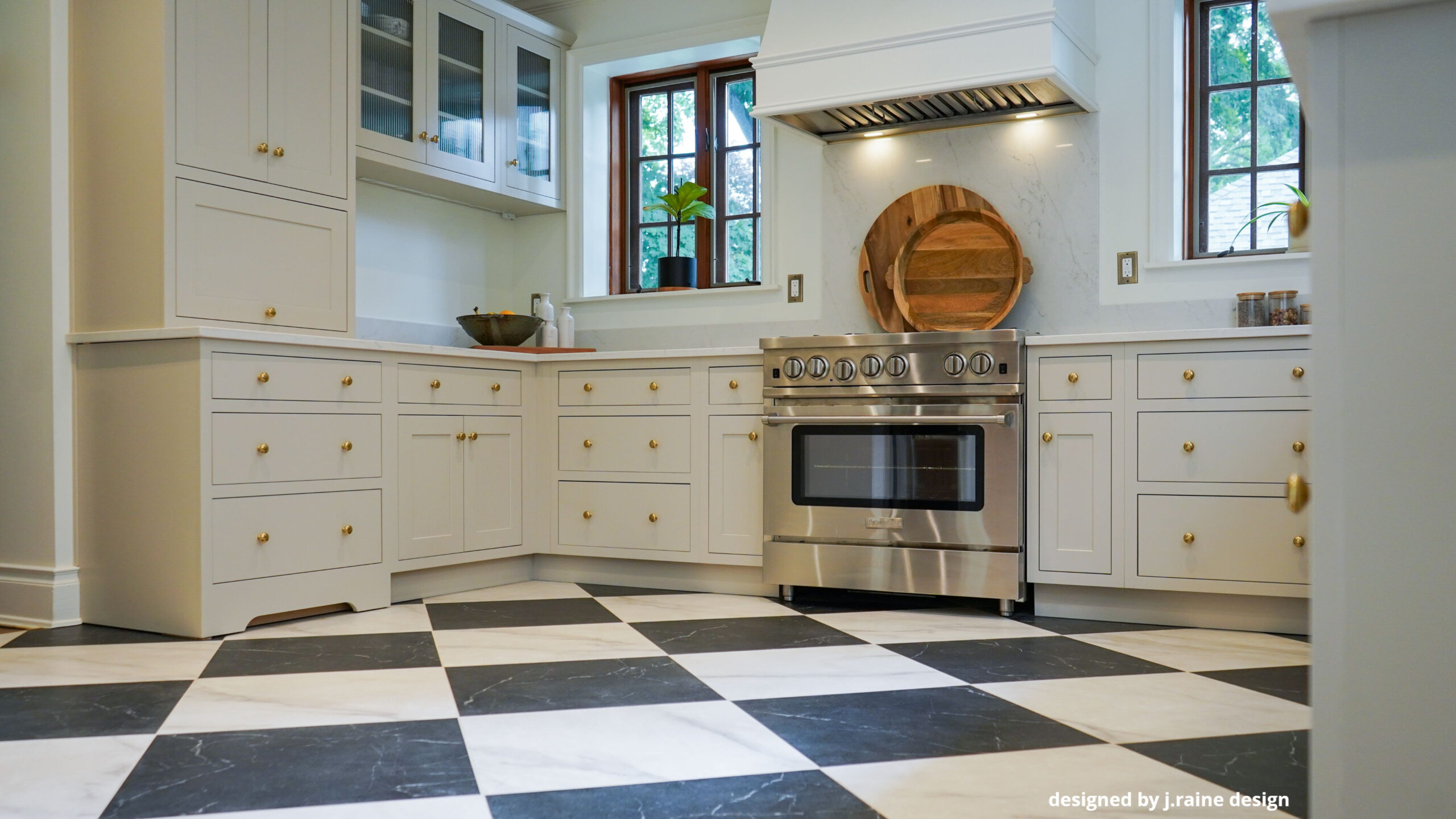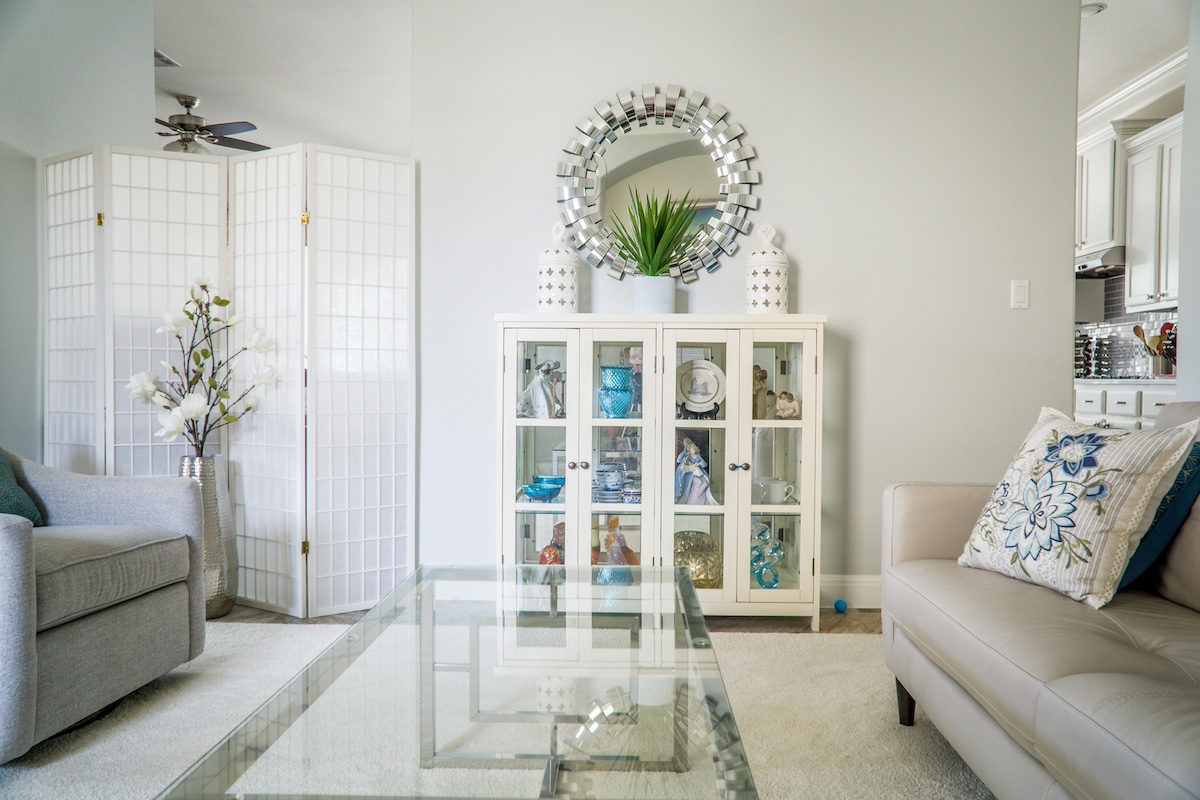Welcome to the ultimate guide on crafting your dream kitchen! In this blog, we’re breaking down the essential considerations for a successful remodel.
If you’re pondering “things to consider when remodeling a kitchen,” you’re in the right place. From budgeting to picking the perfect appliances, we’ve got you covered. Let’s make your dream kitchen a reality, step by step. Ready to dive in?
What is Kitchen Remodeling – Purpose Explained
Kitchen remodeling is more than just a makeover; it’s a thoughtful process of enhancing the heart of your home. It involves redesigning and upgrading various aspects of your kitchen space better to suit your needs, preferences, and lifestyle.
The primary purpose is to transform your kitchen into a functional and aesthetically pleasing area that aligns with your unique vision. Whether you’re seeking improved functionality, updated appliances, or a fresh design, kitchen remodeling allows you to breathe new life into your culinary space.
It’s an opportunity to optimize the layout, increase storage, and create an environment that inspires cooking and gathering. By understanding the essence of kitchen remodeling and its purpose, you pave the way for a project that not only adds value to your home but also elevates your daily living experience.
11 Essential Things to Consider When Remodeling a Kitchen
1. Budgeting Essentials
Setting a Realistic Budget
Begin with a clear understanding of your financial boundaries. Establish a realistic budget that covers all aspects of the remodel, from appliances to finishes, ensuring you’re well-prepared for the road ahead.
Allocating Funds for Key Elements
Prioritize your spending by allocating funds to key elements such as appliances, cabinetry, and flooring. This strategic approach ensures that your budget aligns with your design priorities.
Contingency Planning for Unexpected Expenses
Anticipate the unexpected by setting aside a contingency fund. Unforeseen issues can arise during the remodel, and having a financial safety net will help you navigate these challenges without compromising your vision.
2. Strategic Planning and Design
Assessing Current Kitchen Layout
Evaluate your current kitchen layout to identify its strengths and weaknesses. Consider how the space is utilized and pinpoint areas that need improvement to optimize functionality.
Identifying Design Goals and Priorities
Clearly define your design goals and priorities. Are you focused on creating an open concept, maximizing storage, or enhancing the overall aesthetic? Identifying these priorities will guide your decision-making process.
Utilizing Professional Design Assistance
Enlist the expertise of a professional designer or leverage online design tools to refine your vision. Design professionals can offer valuable insights, helping you make informed choices that align with your goals.
3. Appliance Efficiency
Evaluating Current Appliances
Assess the condition and functionality of your existing appliances. Determine whether they align with your needs or if an upgrade is necessary to enhance efficiency and energy savings.
Researching Energy-Efficient Options
Explore the market for energy-efficient appliances. Investing in modern, eco-friendly options not only reduces your environmental impact but also contributes to long-term cost savings.
Sizing and Space Planning
Consider the size and layout of your kitchen when selecting appliances. Efficient space planning ensures that your appliances not only fit seamlessly but also contribute to the overall functionality of the space.
4. Optimizing Cabinetry and Storage
Choosing Cabinet Style and Material
Cabinets play a pivotal role in the aesthetic and functionality of your kitchen. Choose a style and material that aligns with your design vision while considering durability and maintenance.
Maximizing Storage and Organization
Prioritize storage solutions to maximize organization. Utilize cabinet inserts, pull-out shelves, and other organizational features to keep your kitchen clutter-free and functional.
5. Smart Flooring Choices
Assessing Flooring Options
Evaluate various flooring options, considering factors such as durability, maintenance, and aesthetic appeal. Choose a flooring material that aligns with your design goals and stands up to the demands of a busy kitchen.
Considering Durability and Maintenance
Prioritize durability and ease of maintenance when selecting flooring. Kitchens experience high foot traffic and potential spills, so choosing a resilient material will ensure longevity and easy upkeep.
Coordinating Flooring with Design
Ensure that your flooring choice complements the overall design of your kitchen. Harmonizing colors and textures creates a cohesive look that ties the entire space together.
6. Strategic Lighting Decisions
Determining Lighting for Different Zones
Strategically plan lighting for different kitchen zones. Task lighting for food preparation, ambient lighting for overall illumination, and accent lighting to highlight design elements contribute to a well-lit and inviting space.
Incorporating Natural Light
Maximize natural light by optimizing window placement and choosing light window treatments. Natural light not only enhances the visual appeal but also contributes to a positive and energizing atmosphere.
Fixture Selection for Design Harmony
Choose light fixtures that harmonize with your overall design. From pendant lights to chandeliers, fixtures should complement the style of your kitchen while providing adequate illumination.
7. Plumbing and Fixtures Upgrade
Assessing Plumbing Needs
Evaluate your current plumbing setup and identify any necessary upgrades. Addressing plumbing needs early in the remodel ensures a seamless integration of fixtures and appliances.
Selecting Faucets, Sinks, and Fixtures
Choose faucets, sinks, and fixtures that align with your design aesthetic while considering functionality. Modern, water-efficient options can contribute to both style and sustainability.
Opting for Water and Energy Efficiency
Prioritize fixtures that promote water and energy efficiency. This not only reduces your environmental footprint but also translates into long-term cost savings on utility bills.
8. Contractors and Project Management
Hiring Reputable Contractors
Selecting reputable contractors is crucial for the success of your remodel. Research and gather recommendations to ensure you choose professionals with a track record of delivering high-quality work.
Creating a Detailed Project Timeline
Develop a detailed project timeline to keep the remodel on track. A well-structured timeline helps you anticipate key milestones and ensures that the project progresses smoothly.
Effective Communication and Issue Resolution
Maintain open and effective communication with your contractors. Promptly address any concerns or issues that arise, fostering a collaborative and problem-solving approach throughout the remodel.
9. Permits and Regulations Compliance
Checking Local Building Codes
Familiarize yourself with local building codes and regulations. Ensuring compliance from the outset helps avoid delays and ensures a smooth progression through the remodeling process.
Obtaining Necessary Permits
Obtain all necessary permits before commencing the remodel. Skipping this crucial step can result in costly setbacks and potential legal issues. A proactive approach ensures a streamlined and compliant project.
Ensuring Safety Regulations Adherence
Prioritize safety by adhering to all relevant regulations. From electrical work to structural changes, ensuring that your remodel meets safety standards provides peace of mind for you and your family.
10. Sustainability Practices
Exploring Eco-Friendly Options
Explore eco-friendly materials and practices for your remodel. From recycled materials to sustainable finishes, incorporating environmentally conscious choices aligns your remodel with modern sustainability practices.
Energy-Efficient Choices
Opt for energy-efficient appliances, lighting, and insulation. Making conscious choices to reduce energy consumption not only benefits the environment but also contributes to long-term cost savings.
Waste Reduction and Recycling
Implement waste reduction and recycling practices during the remodel. Proper disposal of construction waste and recycling materials contributes to a more sustainable and eco-friendly project.
11. Final Touches
Choosing Paint Colors and Finishes
Select paint colors and finishes that complement your design palette. The final touches, including wall colors and finishes, bring your vision to life and contribute to the overall ambiance.
Adding Personal Decorative Touches
Infuse your personality into the space by adding personal decorative touches. From artwork to kitchen accessories, these elements contribute to a warm and inviting atmosphere.
Final Walkthrough for Detail Perfection
Conduct a final walkthrough to ensure all details are perfected. Address any remaining issues or adjustments, ensuring that your remodeled kitchen meets your expectations down to the smallest detail.
Frequently Asked Questions About Kitchen Renovation
What considerations should be considered when renovating a kitchen?
Key considerations include budget, layout efficiency (work triangle principle), material durability, eco-friendly options, and whether to hire a professional contractor or do it yourself.
How to decide on a kitchen remodel?
Identify needs like outdated appliances, poor layout, or insufficient storage. Plan by setting priorities and a budget, and ensure the new design complements your home’s overall style.
What are the three tips for kitchen renovation?
- Plan Thoroughly: Detail every aspect to avoid unexpected issues.
- Prioritize Quality: Invest in durable materials and appliances.
- Hire Professionals: For extensive projects, professionals ensure quality and offer valuable insights.
In what order should you remodel a kitchen?
- Planning and Design: Begin by planning the layout, design, and features of your kitchen. This includes setting a budget, choosing a style, and deciding on the materials and appliances you want.
- Demolition: Once the plan is in place, the next step is to remove old cabinetry, countertops, flooring, and appliances. This clears the space for new installations.
- Structural Changes: If your remodel includes any structural changes, such as removing walls or adding windows, these should be completed before other work begins.
- Plumbing, Electrical, and HVAC: Update or install any necessary plumbing, electrical wiring, and HVAC systems. This step ensures your kitchen meets current codes and is ready for new appliances and fixtures.
- Drywall and Painting: Once the mechanical work is done, install drywall, followed by painting or wallpapering the walls.
- Flooring Installation: Install your chosen flooring after the walls are finished, but before the cabinets and appliances go in.
- Cabinets and Countertops: With the floors in place, install the cabinets and countertops. This step forms the foundation of your kitchen.
- Appliance Installation: After the cabinets are in, install your appliances. Ensure they fit perfectly within the cabinetry and are connected to plumbing and electrical systems.
- Finishing Touches: Lastly, add finishing touches like light fixtures, backsplashes, hardware, and other accessories to complete the look of your kitchen.
What considerations should be taken into account when renovating a kitchen?
- Budget: Establish a realistic budget that covers all aspects of the remodel, including unexpected costs.
- Layout and Functionality: Focus on creating a layout that maximizes space and efficiency. Consider the work triangle concept, which places the sink, stove, and refrigerator in close proximity.
- Storage Needs: Plan for sufficient storage with cabinets, drawers, and pantry space that meets your needs.
- Lighting: Proper lighting is crucial in a kitchen. Include a mix of task, ambient, and accent lighting to ensure the space is both functional and inviting.
- Appliances: Choose appliances that fit your cooking habits and lifestyle. Consider energy efficiency, size, and placement within the kitchen.
- Materials and Finishes: Select durable, easy-to-clean materials for countertops, flooring, and cabinetry. Consider how the finishes will complement the overall design.
- Plumbing and Electrical: Ensure the plumbing and electrical systems can accommodate new appliances, fixtures, and any changes to the kitchen layout.
- Ventilation: Proper ventilation is essential to remove cooking odors and excess moisture. Consider installing a range hood or an upgraded ventilation system.
- Aesthetics: While functionality is key, the design should also reflect your personal style. Consider color schemes, cabinet styles, and decorative elements that create the desired ambiance.
- Resale Value: If you’re considering selling your home in the future, choose upgrades that increase your home’s value and appeal to potential buyers.
Conclusion
In bringing your dream kitchen to life, the choice of cabinetry plays a pivotal role in defining the overall aesthetic and functionality. That’s where Cabinetry By Better Bilt steps in. Our dedicated team of designers, suppliers, and craftsmen treats your project as our own, ensuring meticulous attention to detail. Committed to quality, we guide you through every step, delivering exceptional work on time and within budget.
Beyond completion, our support continues to exceed expectations. Choose us for unparalleled craftsmanship and personalized service. Transform your kitchen into a haven that reflects your style and stands the test of time. Your dream kitchen begins with us—Cabinetry By Better Bilt.
